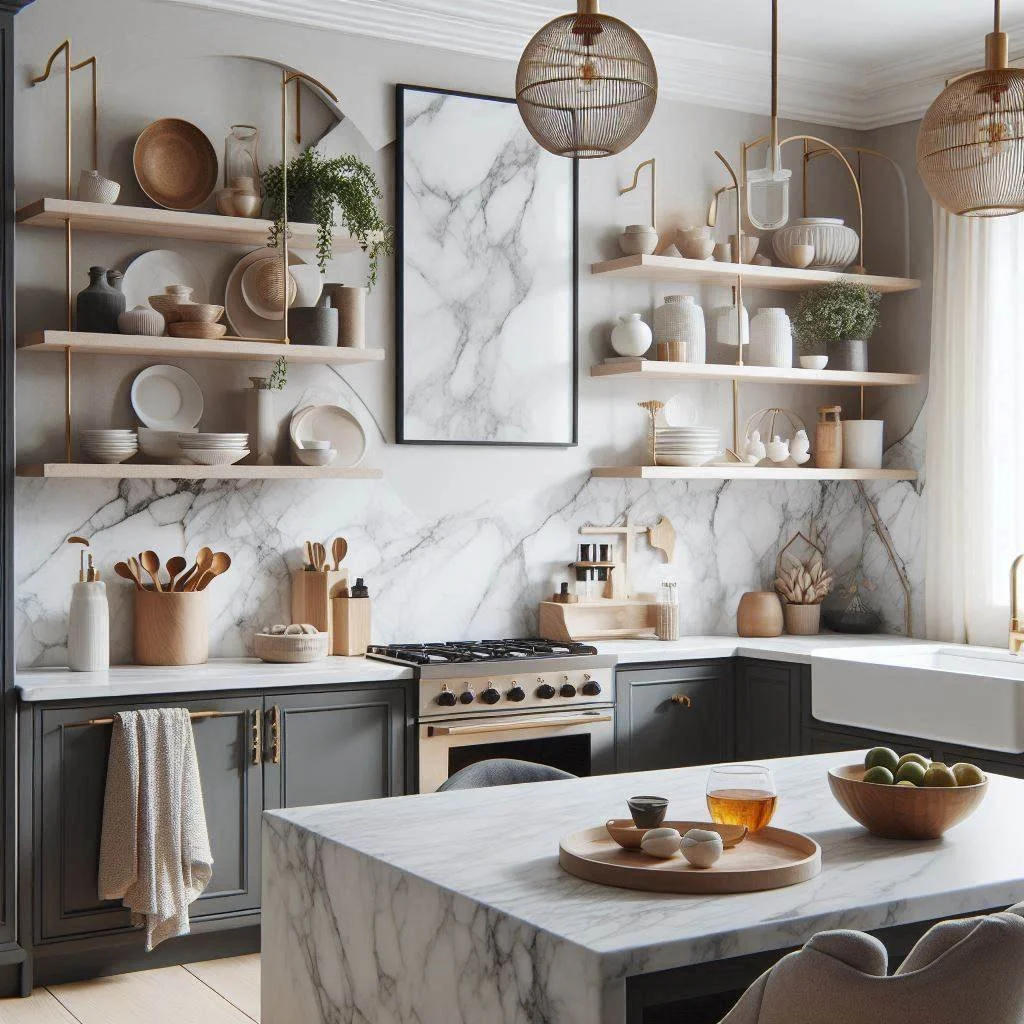What exactly is a designer kitchen? Is it just a kitchen that looks incredibly stylish in a magazine spread? Or is there more to it than meets the eye? It’s easy to get caught up in the aesthetics, but a true designer kitchen is a carefully considered space that blends form and function seamlessly. It’s a kitchen that not only looks beautiful but also enhances your cooking experience and fits perfectly into your lifestyle. Let’s dive deeper into the real definition of a designer kitchen.
The definition of a designer kitchen goes far beyond just surface-level beauty. It’s about creating a space that is both visually stunning and incredibly practical. Think of it as a bespoke suit – tailored specifically to your needs and preferences.
Key Elements in the Designer Kitchen Definition:
- Functionality: A designer kitchen prioritizes workflow and ease of use. Everything should be within easy reach and logically organized.
- Quality Materials: High-end materials are a hallmark of a designer kitchen, ensuring durability and longevity.
- Customization: Forget cookie-cutter designs! A designer kitchen is tailored to your specific needs and preferences.
- Attention to Detail: From the cabinet hardware to the lighting fixtures, every detail is carefully considered.
The Importance of Ergonomics in a Designer Kitchen
Ergonomics play a crucial role in the definition of a designer kitchen. It’s not just about how the kitchen looks, but how it feels to work in. Are you constantly bending over to reach things? Is your workspace cramped and uncomfortable? A well-designed kitchen addresses these issues.
Tip: Consider the “kitchen triangle” – the relationship between the sink, refrigerator, and stove. Optimizing this triangle can significantly improve your workflow.
Ergonomic Considerations for Your Designer Kitchen:
- Countertop Height: Ensure your countertops are at a comfortable height to prevent back strain.
- Appliance Placement: Position appliances for easy access and minimal reaching.
- Adequate Lighting: Proper lighting is essential for safety and visibility.
Materials and Finishes: Defining Luxury in a Designer Kitchen
The materials and finishes used in a designer kitchen are a key part of its definition. Think beyond basic laminate and consider high-end options that will elevate the space. But remember, it’s not just about luxury; it’s about durability and longevity too. You want materials that will stand the test of time and continue to look beautiful for years to come.
Tip: Don’t be afraid to mix and match materials to create visual interest. For example, pairing natural wood with sleek stainless steel can create a stunning contrast.
Popular Material Choices for a Designer Kitchen:
- Quartz Countertops: Durable, stain-resistant, and available in a wide range of colors and patterns.
- Solid Wood Cabinets: Offer a timeless look and can be customized to your exact specifications.
- High-End Appliances: Professional-grade appliances not only look great but also offer superior performance.
The Role of Lighting in Defining a Designer Kitchen
Lighting is more than just illumination; it’s a critical design element. Layered lighting, including ambient, task, and accent lighting, creates depth and highlights key features. Under-cabinet lighting brightens workspaces, while pendant lights add a stylish focal point. Dimmer switches offer flexibility, allowing you to adjust the mood for cooking, dining, or entertaining.
Frequently Asked Questions About Designer Kitchens
So, there you have it. The definition of a designer kitchen is multifaceted. It’s a blend of aesthetics, functionality, and personalization; It’s about creating a space that reflects your unique style and enhances your daily life. It’s an investment in your home and your happiness. It’s a place where memories are made, and delicious meals are created. Ultimately, a designer kitchen is more than just a room; it’s a reflection of you.






